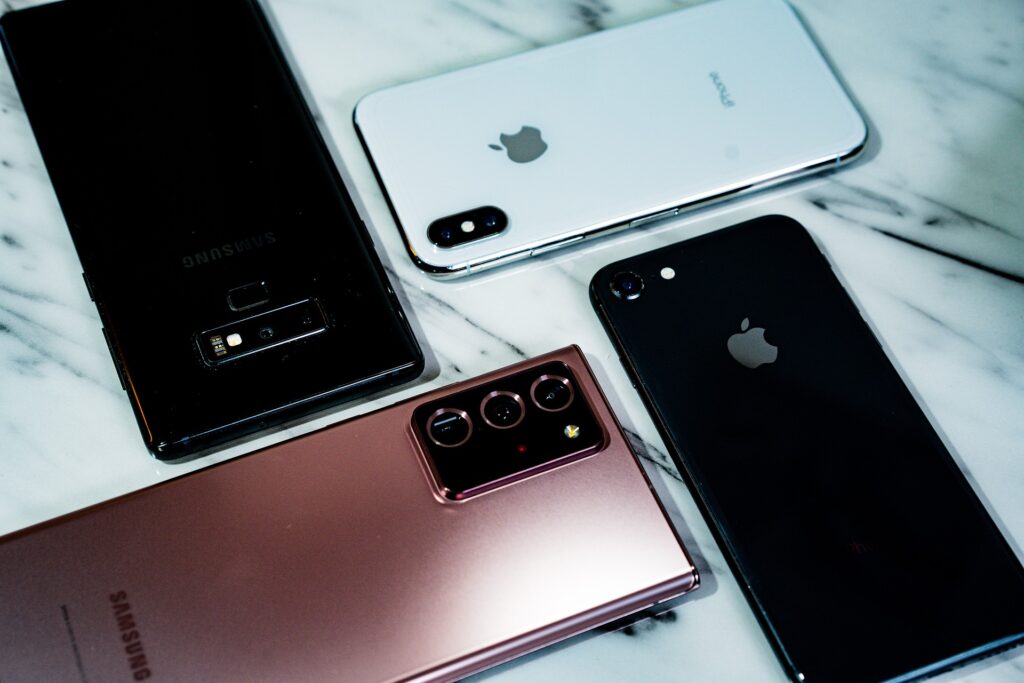How iPhone and Android smartphone owners differ

Vodafone analysts found distinctive features and differences in the behaviour of the capital’s owners of top iOS- and Android smartphones.
They analyzed the habits and preferences of Apple iPhone 11 Pro Max, 11 Pro and 11, Apple iPhone XR, XS and XS Max users and compared them with the habits of Samsung Galaxy Note 10 and 10 Plus, Samsung Galaxy S10, S10e and S10 Plus, Huawei P30 and P30 Pro, and Xiaomi Mi 9T Pro.
Users of the most expensive Android smartphones use 148 MB of the Internet a day and tend to use most apps for write paper and studying. Their iPhone counterparts download an average of 300 MB every day, twice as much – 1: 0 in favour of Apple.
At the same time, iPhone owners spend less time per month on popular apps than Android adepts – 6 days less on Instagram, 5 days less on Facebook, almost 3 days less listening to music online and watching videos on YouTube. How they manage to spend twice as much traffic remains a mystery. According to the hypothesis of Vodafone analysts, iPhone users prefer heavier video content, even during communication in messengers and social networks, and spend a lot of traffic watching videos on other resources. Let’s consider it a win for Android smartphone owners – 0: 1.
If you want to meet the owners of expensive iPhones, it is better to look for them in the Multiplex cinema network. But the owners of Android smartphones in the capital are more fond of Planet Kino. In general, iOS-smartphone users like movies more – almost twice as many of them use the services of cinemas. A slight advantage of iOS over Android also among mall visitors – 59.7% vs. 44.1%. Here preferences are the same – both categories of users like to spend time in Ocean Plaza and Gulliver shopping malls the most. Whether to count any of this as a victory is up to you to decide.
Data analysts at Vodafone not only know “what you did last summer,” or rather what countries you visited. They can predict when you plan your next trip. In choosing countries to travel to, the tastes of iOS- and Android-smartphone supporters are also slightly different. Both categories most often visited Turkey, Poland and Italy, but their paths diverged further. iPhone users also actively travelled to Spain and Germany, while Android smartphone owners travelled more often to Russia and Hungary.
More owners of top iOS models travelled abroad this summer: 46% vs. 38%. They are also more likely to be abroad again in the next two months: 41% vs. 25%. Again, 1: 0 in favour of iOS.
A tie for those driving or on the subway. Half of both iOS and Android users move around the city by car, while the rest choose other forms of mobility. 1:1.
You could resist and not post a photo of your cat – although, this is hardly possible – but Vodafone analysts still found you, focusing on your behaviour on the Internet, your movements around the city and a dozen other secret parameters. Among the users of the latest iPhones, there are 11.6% of cat lovers and lovers of other pets in Kiev, while only 8.2% of Kiev citizens, among those who already have a top Android-based smartphone, also have a pet. Here, too, the score is 1:0 in favour of the iPhone supporters.
The overall score is 5:3 in favour of the iPhone. Let’s keep watching.
